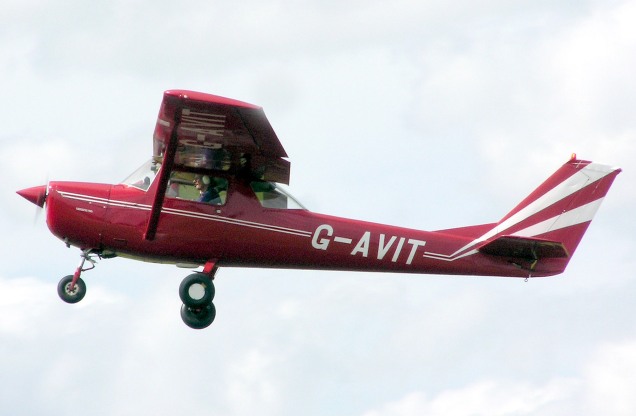In the past, I have covered different incidents that point out how things could be done differently under the guise of “What Not To Do Wednesday” blog posts. This morning, I read an article that was written after the safe resolution of a training flight that included a mechanical failure. In “Elevator Failure at 4,500 Feet”, instructor pilot Rich Wyeroski recounts a flight in which the elevator on the horizontal stabilizer had a malfunction while the plane was in flight. Wyeroski provides a solid recounting of the steps that he took to safely bring the plane down after the student pilot reported difficulty with the controls. In the article, he states that his reason for writing the article is a concern that this incident, particular to Cessna 150 airplanes built between 1959 and 1970, could occur again without a hardware modification to upgrade the elevator hardware to the same standard as Cessna 152 planes as well as some Cessna 150 planes that were later. He also discusses the importance of training to deal with potential emergencies such as this to ensure that pilots:
“Always try and stay calm during an emergency. Don’t do anything until you assess the situation and then react slowly. (The only time I would deviate from the above recommendation is if the aircraft is on fire!)”
Wyeroski, who is not only an experienced pilot, instructor pilot, and instructor for A&P mechanics, gave a great breakdown on how the flight was handled and possible solutions. But, my reason for bringing up this aviation article was the comments section. Some of the comments argued that a pre-flight inspection should have caught this and that a request for planes to have the attachment system for the elevators in the older Cessna 150 models is a little too much for something that happens rarely.
The thought process of those who stated that it should have been caught in the pre-flight inspection really stuck with me when I was reading the article. Several people did note that it would be easy to miss (either by a lack of a thorough pre-flight inspection or by seeming ok during the pre-flight but loosening in flight). The author noted in a comment that no issues were noted during pre-flight or during a recent annual inspection.
Without Wyeroski’s recount, this near fatal flight would not be a learning experience except for those who dig through NTSB case files.
One of the problems in safety and workers compensation is that all too often, only the incidents that cause injuries are reported/recorded and potentially used to effect some level of change within a worksite. Sometimes, it is because only the people involved know about the incident because of not being required to report/record or even check in with occupational health. But these “near misses” are important to take the time and look into more deeply. Many times, the lessons learned from a “near miss incident” can provide the information necessary to change either policies/procedures and or change/adjust equipment to prevent future incidents. Wyeroski even notes in the comments that one lesson that he learned from this incident was to contact Air Traffic Control rather than the local Unicom operator to make sure that the Fire Department was ready and at the runway when he landed (apparently, the Unicom operator was unable to get the fire department to understand the urgency of the request and the risk of a fatal crash).
Photo by Adrian Pingstone, Wikimedia Commons
I am glad to see that this author wrote an article on my accident back in 2016. It was a combination of luck and experience that allowed me to bring the aircraft to a safe landing.
Unfortunately the NTSB takes a different attitude as this incident is still open after more then three years. I remain concerned that this could happen again to some other pilot! I considered this situation very serious yet the NTSB and Cessna have not come out with a conclusion to this failure.
I wrote a Service Difficulty Report SDR, to the NTSB and the FAA as to my recommendation to prevent this from happening in the future. I have never gotten a response and as I said the case remains open with no conclusion.
Richard Wyeroski former FAA Operations Inspection
ATP, CFI, A&P/IA
LikeLike